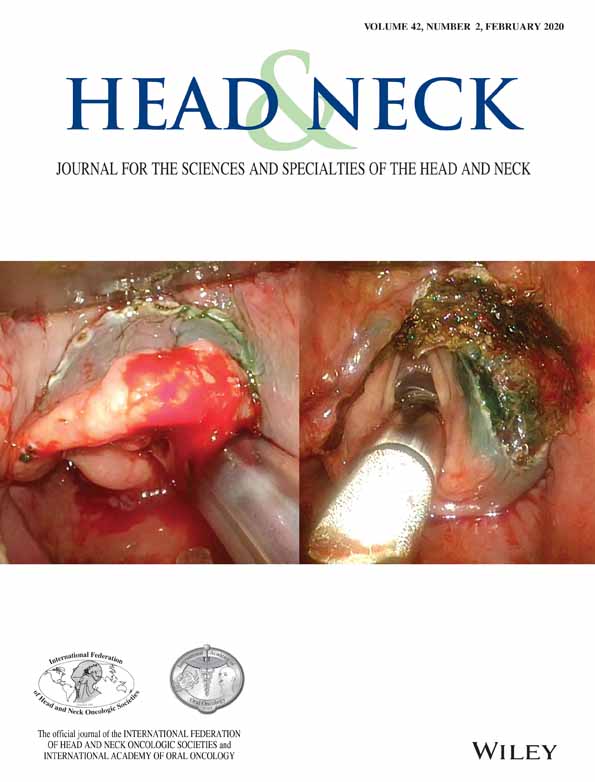Assessment of shoulder function following scapular free flap
Abstract
Background
The scapular system free flap has been increasing in popularity to reconstruct short segment mandibular bony defects. It is important to assess donor site morbidities systematically.
Methods
Prospective cohort study using objective measures of range of motion (ROM) and shoulder strength were measured. Subjective disability was evaluated with validated questionnaires—Neck Disability Impairment Index and Shoulder Pain and Disability Index.
Results
Twenty-six patients were recruited—19 with scapular tip and 7 with lateral border scapular free flap. Decreased ROM on the operated side was noted for shoulder abduction, shoulder flexion, and external rotation. No significant difference was noted for shoulder extension. Strength was reduced for shoulder flexion, shoulder abduction, and external rotation. Subjective measurements did not indicate significant shoulder function disruption.
Conclusion
Patients with scapular free flap reconstruction did not experience significant shoulder morbidity. Measures of shoulder ROM and power were objectively affected; however, subjective measures of shoulder disability were not significantly affected.
CONFLICT OF INTEREST
The authors declare no potential conflict of interest.




